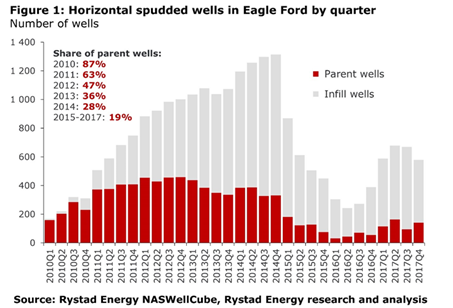OPEC & The Oil Price Will Triumph Over US Shale Oil in 2018
In an article I wrote for the Research Centre of Energy Management (EMC) at ESCP Business School on the 2nd of March 2017 under the title “Oil Prices Will Be Mostly Bullish in 2017”, I said that the oil price will break through the $60 level in 2017. This the oil price did when it has risen to more than $66.78 a barrel in December 2017.
And despite efforts by vested interests including the International Energy Agency (IEA) and the United States Energy Information Administration (EIA) to dampen oil prices, I am now projecting that the oil price could be heading towards $70/barrel or even higher during 2018 and $100 in 2020.
Oil started the year with further price gains despite the quick restart of the Forties pipeline and the equally quick repairs of a pipeline in Libya. Sentiment on the oil market is more bullish than it has been for a long time.
Re-balancing the market
What will be driving the oil price in 2018 is a healthy global demand for oil getting healthier by the day. The first law of oil economics is supply and demand. All other factors are extras. The second law is that oil is like a coin: one side is economics and the other is geopolitics and the two sides are inseparable.
When there was a glut in the global oil market during the period 2014-2017, the oil price trended downwards ignoring all the geopolitical developments such as the war against ISIS in Iraq, the war in Syria, escalating tension between Saudi Arabia and Iran, rising tension between Iraqi Kurdistan and Iraq and the war of words between the United States and North Korea.
Now that the market is re-balancing, any small geopolitical event pushes the price upwards.
One thing, however, was very noticeable in 2017. Without fail, every time the oil price showed signs of heading up, vested interests came up with claims intended to dampen its rise such as the most recent one that US shale oil production is projected to rise to 10.5 million barrels a day (mbd) in 2018.
All eyes will, therefore, be on US shale in 2018 to see whether it can spoil the oil price rally. However, the world should start to get used to higher oil prices as the global oil market completes its re-balancing probably by mid-2018 or even earlier. Claims about rising US shale oil production whether true of not will no longer deter oil prices from rising.
While the US shale production has enabled the United States to reduce its oil imports, there has been a lot of hypes surrounding it with regard to its ability to cap oil prices, profitability of the shale oil industry and the continued rise in production.
To start with, the US shale oil industry will never be a profitable industry. US shale oil producers are so deeply in debt that they have become like the saying of “robbing Peter to pay Paul”. They are heavily indebted to Wall Street to the extent that they continue to produce oil even at a loss just to pay some of their outstanding debts.
There is mounting pressure on US shale producers from shareholders to rein in production growth and start making profits instead.
Because of a very high depletion rate estimated at 70%-90%, US shale producers have to spend billions every year to drill thousands of wells just to maintain production. In so doing they sink deeper and deeper in debt. Sometime in the foreseeable future, there may not be any rich shale plays left in the United States from where to produce oil.
Still, more cracks are beginning to appear that raise serious questions about the long-term future of US shale oil production.
While the US shale industry has boasted of higher initial production (IP) rates from their shale wells in recent years, there is some evidence that suggests those higher IP rates do not necessarily translate into larger gains in the total volume of oil and gas that is ultimately recovered. According to Rystand Energy, an independent Norwegian-based energy research and analysis outfit, a sample of wells in the rich Eagle Ford shale basin in Texas showed that higher IPs rates in recent years were offset by steeper declines than before.
The first few horizontal wells in a section are classified as “parent” wells, with follow-up completions described as “infill” wells. In the Eagle Ford, according to Rystad Energy, the makeup of spudded wells has shifted dramatically towards infill wells as many areas of the basin have been worked over. In 2010, Rystad says, “up to 90% of activity corresponded to new pad development. This share declined rapidly over time, falling to 15-20 % in 2015-2017.” As such, the rebound in output from the Eagle Ford over the past year has mostly come from infill drilling (see Chart 1).
Chart 1

Threatening the oil price with claims about US shale oil production has lost its impact on oil prices. The global oil market has already seen through that ploy. The proof is the current rise in oil prices. Claims about rising US shale oil production whether true or not will not deter oil prices from rising to a projected $70/barrel or even higher in 2018 and probably $100 by 2020.
The oil price will in 2018 triumph over the US shale oil and OPEC, which underpinned the price by its production cut agreement, is winning the war against the US shale oil industry.
*Dr Mamdouh G. Salameh is an international oil economist. He is one of the world’s leading experts on oil. He is also a visiting professor of energy economics at the ESCP Business School in London.
The views and opinions expressed in this article are those of the author and do not necessarily reflect the position of ESCP Business School.









 Facebook
Facebook Linkedin
Linkedin Instagram
Instagram Youtube
Youtube EMC Newsletter
EMC Newsletter







